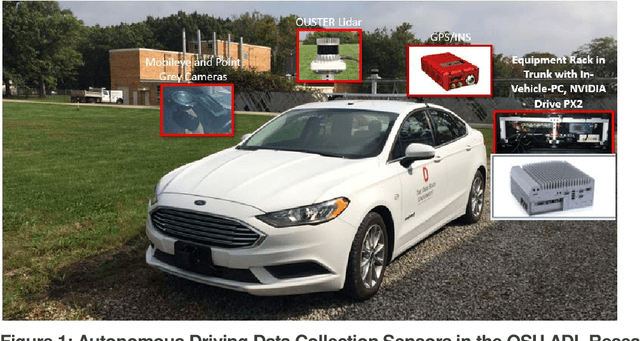Karina Meneses-Cime
Shared Autonomous Vehicle Mobility for a Transportation Underserved City
Oct 25, 2022Abstract:This paper proposes the use of an on-demand, ride hailed and ride-Shared Autonomous Vehicle (SAV) service as a feasible solution to serve the mobility needs of a small city where fixed route, circulator type public transportation may be too expensive to operate. The presented work builds upon our earlier work that modeled the city of Marysville, Ohio as an example of such a city, with realistic traffic behavior, and trip requests. A simple SAV dispatcher is implemented to model the behavior of the proposed on-demand mobility service. The goal of the service is to optimally distribute SAVs along the network to allocate passengers and shared rides. The pickup and drop-off locations are strategically placed along the network to provide mobility from affordable housing, which are also transit deserts, to locations corresponding to jobs and other opportunities. The study is carried out by varying the behaviors of the SAV driving system from cautious to aggressive along with the size of the SAV fleet and analyzing their corresponding performance. It is found that the size of the network and behavior of AV driving system behavior results in an optimal number of SAVs after which increasing the number of SAVs does not improve overall mobility. For the Marysville network, which is a 9 mile by 8 mile network, this happens at the mark of a fleet of 8 deployed SAVs. The results show that the introduction of the proposed SAV service with a simple optimal shared scheme can provide access to services and jobs to hundreds of people in a small sized city.
Simulation Environment for Safety Assessment of CEAV Deployment in Linden
Dec 18, 2020



Abstract:This report presents a simulation environment for pre-deployment testing of the autonomous shuttles that will operate in the Linden Residential Area. An autonomous shuttle deployment was already successfully launched and operated in the city of Columbus and ended recently. This report focuses on the second autonomous shuttle deployment planned to start in December, 2019, using a route that will help to solve first-mile / last-mile mobility challenges in the Linden neighborhood of Columbus by providing free rides between St. Stephens Community House, Douglas Community Recreation Center, Rosewind Resident Council and Linden Transit Center. This document presents simulation testing environments in two open source simulators and a commercial simulator for this residential area route and how they can be used for model-in-the-loop and hardware-in-the-loop simulation testing of autonomous shuttle operation before the actual deployment.
 Add to Chrome
Add to Chrome Add to Firefox
Add to Firefox Add to Edge
Add to Edge